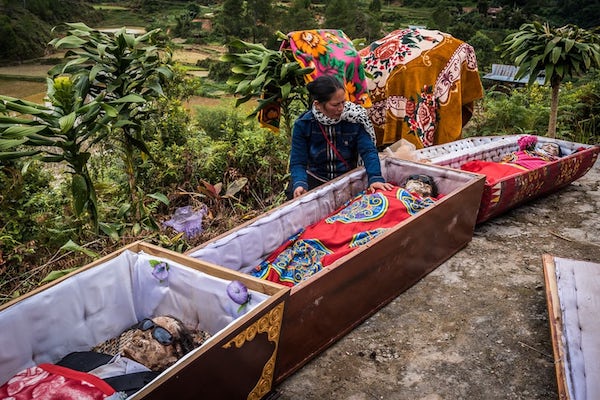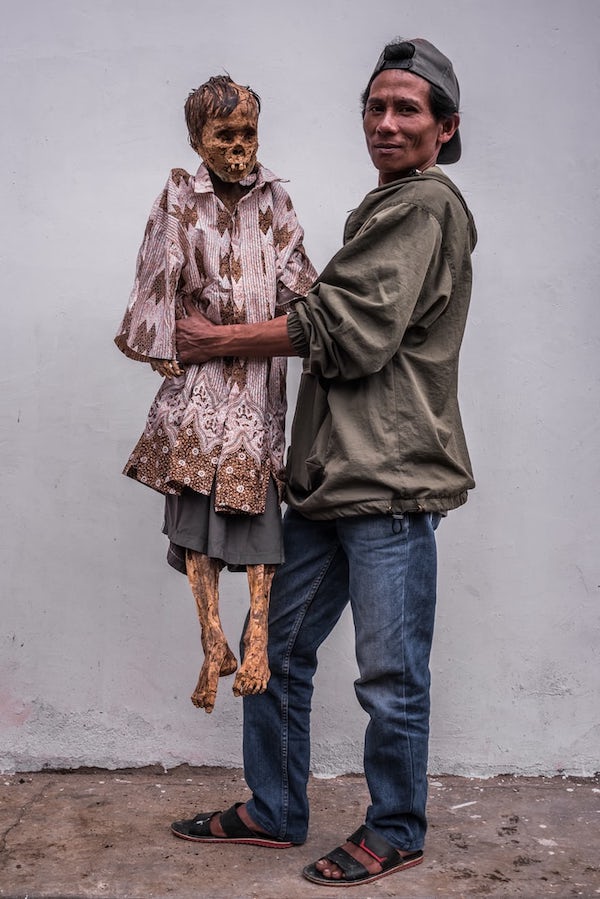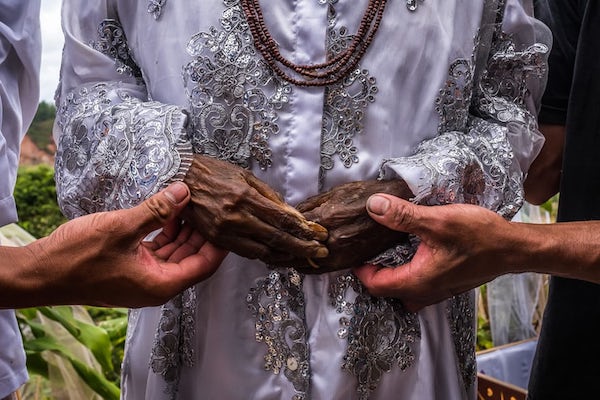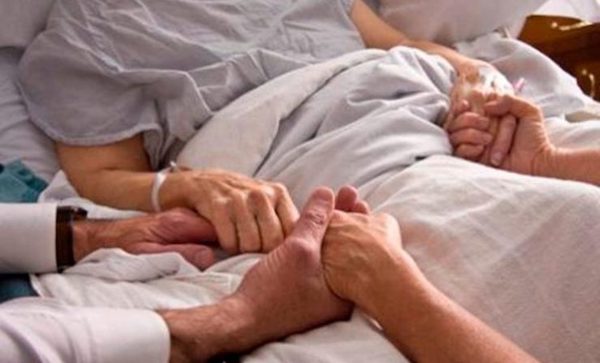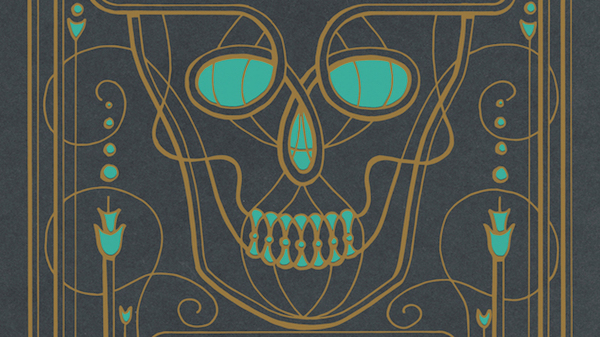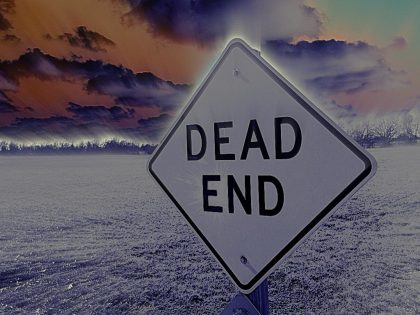
By Caleb Wilde
[I]t was nearly six in the morning when I heard the sounds of hovering helicopters a couple hundred yards away from my house. At the time, my wife, Nicki, and I lived in a small half of a double on the farthest fringe of the Borough of Parkesburg. While the occasional helicopter could be heard in the Parkesburg proper, our little house on Upper Valley Road was sandwiched by the sounds of the trains that ran on the tracks a hundred feet from our small backyard and the speeding cars on Upper Valley a mere 20 feet from our front door.
I peeked my head outside the window but couldn’t see the machines that were producing the sounds I could so clearly hear. The idea that something must be very wrong entered my mind. I turned on the television, and sure enough, the Philadelphia station I turned on had a breaking news update. The rhythmic and practiced voice of the news anchor read the prompter with all the outward concern he could exercise: “Two young boys and their aunt and uncle died in a fiery car crash outside of Parkesburg, Chester County, late last night.”
Parkesburg is an hour outside of Philadelphia. We’re the small town of 3,500 that claims Philadelphia as our closest “big city” while Philadelphia has no idea we even exist, except when something horrific happens. This morning, Parkesburg had made the news. Today, Philadelphia reporters descended upon Parkesburg to fill their 6 a.m. quota.
There have been a few times when Facebook has informed me of a death before the family has called us at the Wilde Funeral Home, where I work with my father and grandfather. But this was the first time I had turned on the television and watched aerial footage of a disaster that was soon to be passed onto me. When I got to the funeral home later that morning, I learned we were the ones entrusted to handle the services for all four of the deceased. The two adults (the aunt and uncle of the boys, who were babysitting them at that time) were to be cremated, while the boys, 8 and 10 years of age, were to be embalmed and viewed, depending on the condition of their bodies.
The following day — after the coroner performed her duty — I drove our van to remove the two adults first (our removal van comfortably fits two in the supine position). After I dropped them off at the funeral home, I jumped back in the van to pick up the bodies of the two boys. When I go on these tragic calls, I’ll usually either sit in silence or find some upbeat music on the radio to distract me from the void. It can be anything — Pop music. Oldies. Katy Perry.
After driving the bodies home, it was my duty to unzip the body bags for the two boys to see if their faces could be made presentable for a public viewing. The smell of burnt human flesh is somewhat distinct. It sticks to your hair, to your clothing, and when I opened those bags, what I saw will forever stick in my mind. You’ve seen the Hollywood versions of burn victims, and it’s all horrible, but the visuals we see on the TV screen don’t do justice to these tragic deaths. All deaths have a type of presence, but tragic deaths have a presence that fills a room. I don’t know if I believe in ghosts, but I do believe that the dead have some kind of aura.
I had to look at the boys’ faces to determine whether or not we could have a viewing, hoping to find a visage that could — through hours of work — be presentable to the family. Unfortunately, I didn’t find what I was looking for and had to inform their stricken parents that a public viewing was outside of our ability, which — in a way — produces a small sense of guilt in me. Whether the pressure is from an inward or an outward expectation, there’s always this nagging feeling that we should be able to restore any form of disfigurement, that embalmers should possess some Harry Potter magic in our prep room and magically wave our trocar (a large needle-like instrument we use during embalming), and then “poof” we have beautiful corpses. But there is no magic trocar. And there are no mystical chants.
The family was broken in more ways than one. They were fighting about who would officiate the service. One part of the family wanted a nonreligious service while the other side wanted a Christian service. Threats were made. Words were spoken that should never be spoken, and we had to involve the police. The day before the service a police officer came to the funeral home to go over the plan of action if the funeral became volatile.
As we were going over the funeral procession route with the officer, I collapsed and momentarily lost consciousness; the policeman called the ambulance, and I was taken to the hospital’s emergency room with what would later be generically diagnosed as physical exhaustion.
On my way to the hospital, not knowing what was happening to me, I had a moment of unshackled clarity: Was this what I wanted to do? Is this who I wanted to be?
* * *
Months before I found myself in the back of that ambulance, watching the strobe lights bounce off nearby houses and road signs, I found myself struggling with depression and compassion fatigue. My doctor had prescribed me antidepressants to combat the day-to-day experience of depression, but there wasn’t anything for rejuvenating my burnout.
The first couple years of working at the funeral home, I felt like a duck swimming in deep water. From the outside, I was calm, confident, and natural, but underneath, I was kicking furiously against the darkness. Although I knew what I was getting into when I joined the funeral business, it wasn’t my closeness to death that was destroying me; it was how I viewed it. If someone had suggested to me then that there’s beauty in death, that there’s goodness in death, that death could inspire a healthy spirituality, I would have thought them both morose and naïve.
Even though I had grown up around death — funeral director was the family profession on both my mother’s and father’s side — I was just as susceptible as anyone to what I call the “death negative narrative” that so many of us have come to believe. On a practical level, I had seen too many tragic, traumatic, and horrific deaths portrayed on TV, the internet, and at work. And beyond the normalization of extremes via the media, the death-negative narrative is wired into our very biology. Humans are a most advanced death-defying machine.
We have highly evolved systems to fight against the onslaught of death, foremost of which is a brain that sets us above all our competition. And that brain has kept us alive and given us the chance to evolve through its fight-or-flight mechanisms. Death is our oldest evolutionary enemy, and we are so advanced at fighting it that for about 50 to 90 years, most of us win. Still, fearing death is part of our biology; it numbs our minds whenever we try to think about it, and even the most rational among us struggles to find clarity when confronted with the death-negative narrative.
Another thing that made me susceptible to the death-negative narrative is that even though I had seen thousands of dead bodies, I had never seen someone die. Many have had the privilege of holding the hand of a loved one as he or she passed, but many others of us haven’t, in part because the dying process has been isolated in nursing homes and hospitals. In times past and in many other cultures outside the United States, death and dying happen in home and community, with family and friends acting as death doulas, leading the dying through their final life stage. Today, though, doctors and nurses have replaced family and friends, an unintended consequence of the advancement of medical science. We fear death because we don’t know it, we don’t see it, and we don’t touch it.
* * *
Dressing a loved one, caring for him or her after the person has passed away is a great example of what a good death, a positive narrative, looks like. Part of what contributes and perpetuates the death-negative culture we find ourselves in is that death care has become an industry that has told people, This is beyond your capabilities to handle. Death is scary, messy, gross, sad. Let us take care of it for you.
When the funeral industry professionalized death care and did away with the “community undertaker,” it implicitly and legally made death amateurs of everyone else. With doctors having authority over dying, and funeral directors gaining authority over death, it created a culture of death virgins, people who have little experience and know-how when it comes to the end stage of life. The funeral industry is partially to blame for creating the “death professional”; after all, the industry has worked hard to secure our position by creating laws and educational requirements to make us at least seem like the exclusive practitioners of death care.
But it wasn’t just capitalist undertakers who created this professional and amateur divide. Part of the reason the funeral industry buried the community undertaker was because death doesn’t jibe with the modern American vision and those Americans who embrace it. Death questions our delusion of self-mastery. So let’s just ignore it. Or better yet, let’s find someone else to handle it.
Americans found a “win-win” situation by giving their dying and dead over to a willing nursing home industry, hospital care that stays death like an overdue pregnancy, and a funeral industry that happily disposes of our dead. We’ve created multiple groups of professionals to handle our dead, and we pay loads of money for the service.
Funeral directors are one of those groups. We perform the magical disappearing act when we take your body, embalm it, dress it, casket it, and give you back a sleeping corpse unscathed by the deterioration of decomposition. Cremation is no different. The body is whisked away and comes back in a small little box, with little to no family participation. This magic is modern and means people never get to touch death or care for their dead.
The axiom is simple, although forgotten, or ignored: the more we practice death care, the less we fear death itself; the closer we become to our dead, the less we fear death. In much of the history of our world, people have been much closer to death than they are now.
But sometimes, families transcend the narrative for just a little, and instead of being an audience to the funeral process, they take the active role, pulling away the magic and making death visible once again. They take death into their hands and decide they are the professionals. In fact, many Amish still dress and casket their loved ones. The funeral director will embalm the deceased and then the Amish family will take the body into their care. Some families will wash the deceased, then they’ll gently clothe the deceased and place the body into the plain wooden casket. Many Mormons, Muslims, and Jews all do the same. This is one of the luxuries of a close-knit community. And when the family of Tommy Ricci, a friend of my grandfather, called to let us know Tommy had died, it was a luxury I wanted to offer them, too.
My grandfather agreed. “Why don’t you ask them,” he said.
We rolled the stretcher through the front door, walked it over to the bed where Tommy lay. My grandfather invited anyone who wanted to to help lend a hand, and in a couple of seconds a good dozen people surrounded Tommy’s bed; we grabbed the bed’s mattress sheet, cocooned his body with it, and passed his body over to the stretcher. After we had strapped him on the stretcher, my grandfather confirmed the time we’d meet with them tomorrow for the funeral arrangements, instructed them to bring the clothing they wanted Tommy to wear for the viewing, and then left the conversation open for my question.
I cleared my throat, not sure how they’d respond to what I was about to ask them. I said, “Would you guys be interested in dressing Tommy for his funeral?”
Tears stared running down the face of Tommy’s wife. His sisters started, too.
Amid the tears, they responded, “Could we?” And with my yes, Tommy’s wife embraced me and started sobbing on my shoulder. By the time she was done hugging me, I had joked that she’d have to pay to have her snot dry-cleaned off my suit.
The next day, Christmas Eve, the Riccis were at our front door, clothing in hand. They made the funeral arrangements with Pop-Pop, and when they were finished, I guided them to the dressing room while explaining how the process of dressing a dead body worked. “Grief brain” is like being drunk. It’s hard to be “in the moment” as nearly 80 to 90 percent of your brain energy is being redirected to grasping the new normal of life after loss. I wasn’t sure if Tommy’s family’s grief brain would keep them from being able to do the task at hand. Maybe they’d burst into tears and storm out of the dressing room. Maybe they wouldn’t be able to stomach seeing the incision near his collarbone from the embalming.
They walked into the dressing room with stoic faces, bent on not being encumbered by the obvious emotional weight of the whole thing. We laid out the clothing and cut Tommy’s undershirt, dress shirt, and sport coat down the back. We used the body lifter to put his underwear, pants, and socks on. Then we tucked in the shirt, laced the belt through his pants. One of the sisters combed his hair and styled it. They all talked to him, just like I do when I’m with bodies.
Are your pants too tight? I’ll loosen that belt.
Let me get your hair just how you liked it. You could be a pompous thing with this hair of yours.
I know you hated dressing up, but you have a big day coming, gonna see a lot of people.
On the day of the service, all of Tommy’s family and over two hundred other people showed up to the church. It was a few days after Christmas, and the church was still dressed in its Advent outfitting. Wreaths and candles filled the air with holiday scents, and the cheer that seeps into this special time of year was still detectable.
Because life is this beautiful, complex, and messy web of giving ourselves away to others, and allowing others to give themselves to us, shouldn’t our dying process be supported by those who created our web of life? Shouldn’t our death be supported, not by a single funeral home or funeral director, but by these life connections that have been created by us and those that have created us? Funeral directors hold incredible value — and we’ve always existed in one form or another — because death is hard, but I believe bereaved families are robbing themselves and our loved ones by capitulating dying and death over to the “experts.”
Tommy’s family taught me that anyone can — and should — be a part of the death-care process. And I’m sorry our sometimes-capitalist intentions have made people “amateurs.” I’m sorry that we’ve helped exacerbate the fear of death by monopolizing death care, but I think together, in the messiness of life and death, we can find a way to grow closer to our dying and our dead.
Complete Article HERE!





